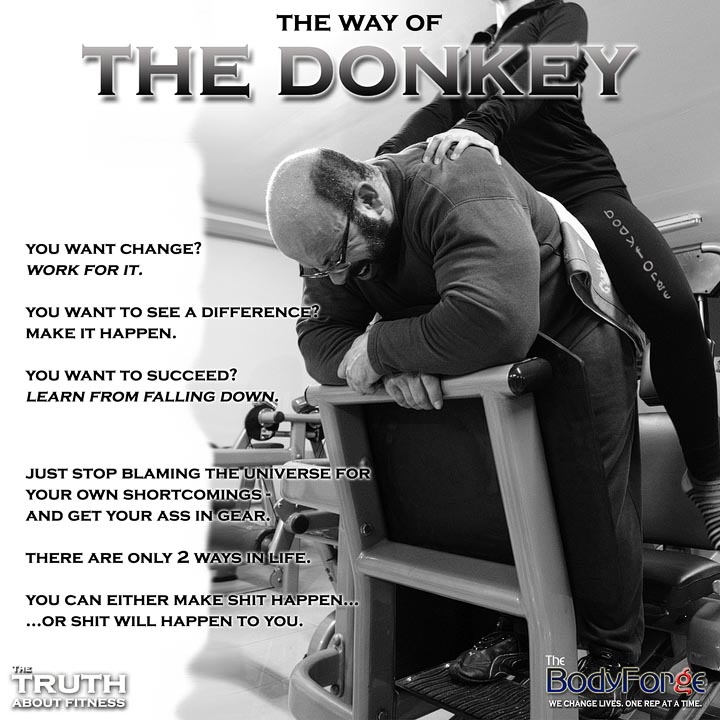And Why Is Knowing When It Really Started A Crucial Point
THE CASE AGAINST A COVID-19 LOCKDOWN
I would like to extend my heartfelt appreciation to my friend and colleague Dr. Thomas Grant, esteemed physician, avid researcher and voracious reader, whose tireless work, constant updates and relentless quest for knowledge provided the stimulus for me to write this article.
Our world in March 2020 – the focus of just about every single person in Malta and Gozo is myopically zoomed in on just two things: the impending lockdown and the size and details of the rescue package we will need to salvage our economy – or whatever is left of it.
If we were to back off from all of the hysteria for even just a few seconds, what I believe the real question we should be asking is this – why are we focusing so hard on a shutting down the entire country when the data we are basing our gradual economic and social asphyxiation on is still so unreliable and incomplete?
Official Infection vs Original Infection
Hear me out.
The official Chinese records show that the first Covid-19 case recorded there was around mid-November 2019 .
On February 24th, Malta started officially screening all passengers arriving at Malta International Airport using thermal cameras. For argument’s sake, we will assume that Covid-19 infection data started being collected locally at around this time.
This means that, at least officially, this is when coronavirus infections started popping up on the radar in Malta.
However, it is pretty logical to assume that, given the rate of worldwide spread we have seen of the virus so far, it had actually been present in both Malta and Gozo far earlier than this.
It is crucially important that one of the pivotal questions in this saga should be – how long has this particular coronavirus strain REALLY been present in our islands?
Coughing In The New Year
Roughly around the end of December and the beginning of January, I started noticing that an uncommon number of patients of mine were reporting a particularly irritating cough, with some also reporting slight aches and pains that are characteristic of the typical flu.
The episodes of cough reports were frequent and very close together, suggesting an infection cluster, but I thought little of this at time, thinking it was just a bad flu season.
In retrospect, I am now wondering if these were actually the true first cases of Covid-19 infections flying under the radar. I would welcome any data or reports concerning this, to see if anyone else noticed these symptoms in their patients, friends or themselves around this time.
I have no data regarding flu-related deaths around the beginning of the year locally but it would be of interest to note if there were any uncharacteristic spikes. Again, I am not aware of any reports of particularly virulent ITU admissions due to flue infections or undue deaths locally around this time.
The Smoking Gun
So, what’s the point of this?
My contention is that determining with as much precision as possible when Covid-19 actually showed up in Malta and Gozo should be a crucial matter in gauging the size of the response we are about to unleash on these islands. Knowing how long this virus has really been here will be pivotal in assessing how serious this pandemic is and how far along it has actually progressed.
As is probably the case in most countries, if we were to assume that the virus was indeed present at around the beginning of the year, with none of the testing procedures and the current social distancing yet in place, then we must have had thousands of unseen infections with no alarming spike in local mortality rates.
Taking the earlier arrival of the virus here into consideration would obviously reduce the officially-attributed mortality rate of Covid-19 significantly. Additionally, factoring in the increase in the number of infective exposures to the virus when adding in the months for which we have no data, this would also mean that we are much further into the epidemic than is being currently assumed.
With that in mind, one should start to question the efficacy or even the logic of a total lockdown at this point, knowing the social and economic disaster such a step would bring about.
The Lockdown Logic – Where Is That Coming From?
So where is the compelling evidence for a lockdown emanating from?
The panic seems to have started when the Grantham Institute, which is Imperial College London’s hub for climate change and the environment funded a single study that predicted over 2 million deaths from coronavirus if a lockdown was not implemented.
Additionally, we keep hearing about the purported 8-9% death rate in Italy, which adds fuel to the hysteria that this is a diabolically dangerous virus.
Again, my contention is that it is not feasible to think about “flattening out the curve” if we do not have accurate data as when to the curve actually started.
Let’s take the following data into consideration.

Source: https://en.wikipedia.org/wiki/2020_coronavirus_pandemic_in_Malta
As you can see, the line starts shooting up from one week into March. Again, it’s crucial to keep in mind that this is not when the coronavirus infections started but when data collection started. Thus, there is no absolute certainty that the Maltese patient zero was 12 year old Italian girl who arrived in Malta on 3 March from Rome after a holiday in Trentino.
The ‘Diamond Princess’ Dilemma
Remember the Diamond Princess?
This ill-fated cruise liner would have been the ultimate bubbling cauldron for the coronavirus, with 3,711 mostly elderly people confined on-board one ship, breathing the same recycled air within the relative confines of the same decks.
If there was one place on earth when Covid-19 should have had a field day, decimating one of its most vulnerable demographics, this would have been it.
However, the Princess Diamond only showed a 1.25% fatality rate.
New York, which is apparently a far worse hot spot at the time of writing, has a current mortality rate of around 0.8%, and even that is dropping as more patients are being tested and the data is aligned accordingly.
This adds to the argument that the more cases that are being tested, the more the numbers of those infected goes up, yet the lower the mortality ratio drops.
Now, according to virologist Trevor Bedford, associate professor at the Fred Hutchinson Cancer Research Center and the University of Washington, we are potentially looking at six times as many people are infected vs. those actually tested. So if 1 million people have tested positive, that means 6 million people might actually have it.
Factoring in the new data would mean that the death rate is just about the same as the seasonal flu.
The Italian Connection
Yes, I hear you. What about Italy? Why are the numbers there so high?
Great question.
It has been suggested that the since a significant percentage of the population there is somewhat elderly, with a median of 67, this might be the reason for the higher mortality rate.
However, as we have already pointed out, the Diamond Princess scenario, despite having similar demographics, had significantly lower mortality rates, on par with the rest of the world.
According to Professor Walter Ricciardi, scientific adviser to Italy’s minister of health, this spiked anomaly has happened because of the way Italy records deaths of those who have tested positive for the coronavirus.
“The way in which we code deaths in our country is very generous in the sense that all the people who die in hospitals with the coronavirus are deemed to be dying of the coronavirus.”
In other words, they are over-counting deaths.
Now keep the following in mind.
Germany, where the age demographics are similar to Italy but record keeping is more accurate, has a 0.3% fatality rate.
Who Does The Lockdown Really Hit?
Let’s put all the above into perspective.
The more data we gather, the more it’s looking like Covid-19 has a mortality rate that is nowhere near as bad as it has been made out to be.
Granted, a mortality rate of 0.75% would still be three times higher than H1N1, which is cause for concern – but does it warrant the complete lockdown of Gozo and Malta?
One thing that must be pointed out is that the true effects of this pandemic will very probably not be the direct effects of the virus itself, but of the measures being taken to attempt to control what is essentially an influenza infection.
So, where might we be over-shooting the mark in the face of social pressure?
- Does this truly warrant closure of all schools for the remainder of the scholastic year? In a recent analysis by a team of researchers at Johns Hopkins and in China of more than 72,000 confirmed cases from China, children under the age of 10 accounted for less than 1 percent of all infections. Of the 1,023 deaths recorded in China at the time, not a single child was among them.
- We have already been told that at least half of Gozo’s businesses will shut down if this persists and they are not given adequate help, with potentially thousands more losing their jobs in Malta.
- Has anyone thought about the upsurge in divorce rates, with the subsequent issues they cause, that might spiral when forcibly locking couples into a confined space?
- Has anyone actually checked out the domestic abuse that might be going on behind closed doors due to this enforced isolation?
- Are we truly prepared for the potential crime spike that might happen due to this clampdown?
- Has anyone thought about the devastating mental health issues that will undoubtedly arise during and after this? We are already seeing a worrying upsurge in the sales of anxiolytics and other more serious drugs.
- Is anyone following the possible spikes in suicides that deteriorating mental health is going to bring about?
- Are we considering what effect this will have on the marginalized and the poor?
The South Korean Model
If we were to look for a ray of light, South Korea is emerging as a leader in the fight against Covid-19.
In a country of 50 million, it has managed to bring down infections from 909 at their peak on 29th February to just 74 new cases on March 17.
All without locking down entire cities, disrupting businesses, destabilising the economy and the other draconian measures we have seen so far.
The strategy used?
The most expansive and well-organized testing program in the world, combined with extensive efforts to isolate infected people and trace and quarantine their contacts.
The Ultimate Three Questions To Ask
So, here are perhaps the more necessary questions we should be considering right now:
- Is a total lockdown simply a knee-jerk effect to the hysteria Covid-19 is generating at this moment in time?
- Or would it be more opportune to devote our resources to shielding the vulnerable demographics while allowing our healthy citizens, a lot of whom might have already been infected and recovered spontaneously, to go back to work, with the proper precautionary measures in place?
- Would a lockdown really slow down the virus – or is it going to take down far more lives in its aftermath than it actually saves in its inception?


















Leave a Reply